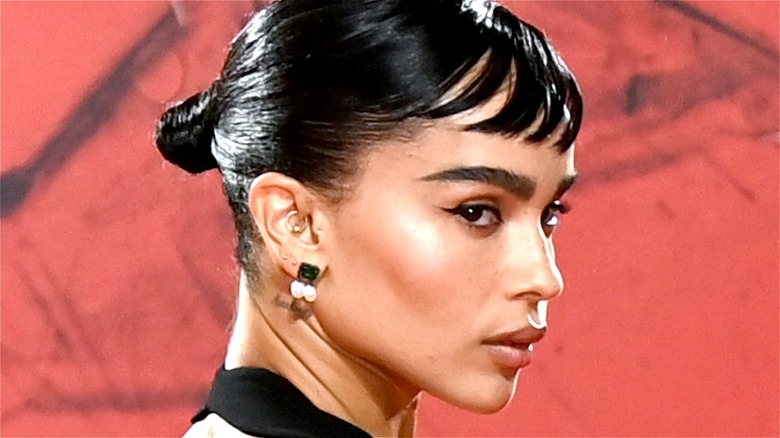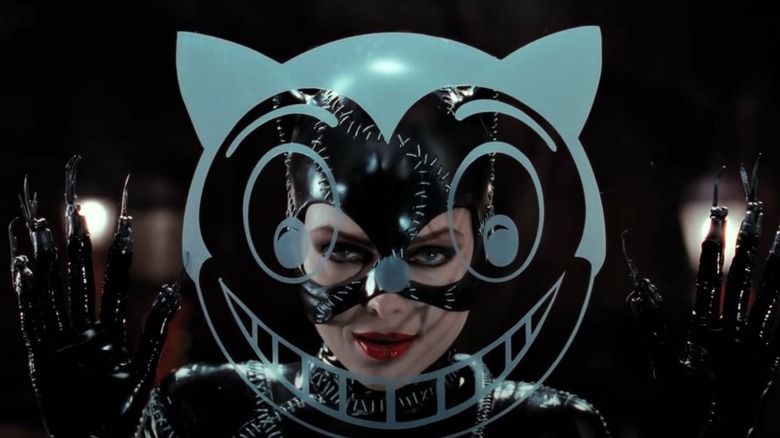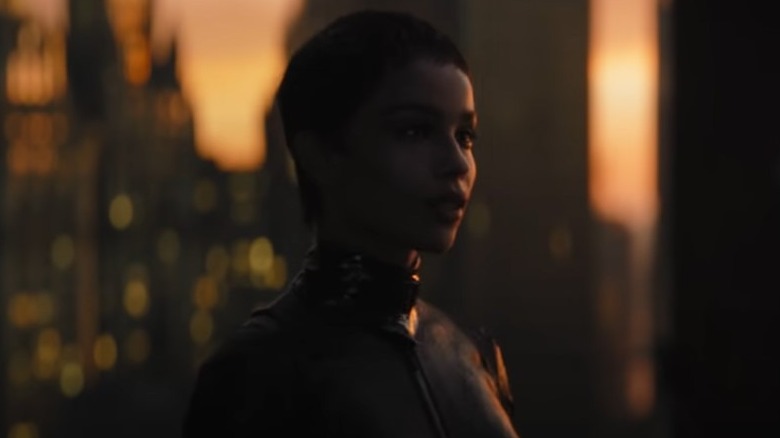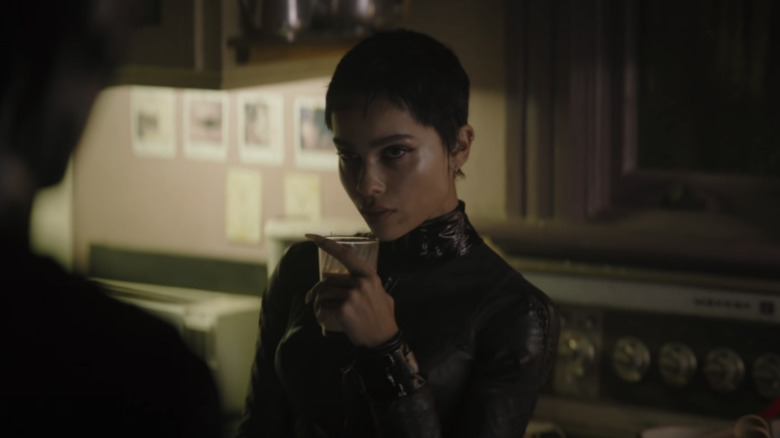Zoe Kravitz Vs. Michelle Pfeiffer: Here's Who Played The Better Catwoman
Selina Kyle is an expert thief, capable hand-to-hand combatant, and on-again-off-again love interest and ally of Bruce Wayne, aka Batman. She has made appearances in every significant "Batman" franchise to hit the screen since the original series from the 1960, and the question of who plays the best Catwoman goes back six decades.
Michelle Pfeiffer's rendition has largely been considered the best out of all of the live-action villainous felines, as evidenced by a survey done by IGN in February, where she tallied over half of the votes. She made her appearance in the 1992 follow-up to Tim Burton's "Batman," "Batman Returns," where she fought opposite Michael Keaton's Batman to take down the corrupt businessman Max Shreck (Christopher Walken).
In Matt Reeves' "The Batman," Selina Kyle makes an appearance again, this time portrayed by Zoë Kravitz. Ironically, she appears alongside Oswald Cobblepot/The Penguin (Colin Ferrell), the same as Pfeiffer did in 1992 (that rendition played by Danny DeVito). Kravitz brings a dark, gritty, and grounded approach to the character, which works well in Reeves' take on the Batman mythos. But how does the Kravitz version measure up to the heavy-hitting Pfeiffer version?
Pfeiffer brought a dark version to the screen
Michelle Pfeiffer's Selina Kyle was the first time the character was on-screen since the '60s, and she brought a darker, Burton-esque take to the role. At her core, Selina Kyle is a thief and someone typically out for her own gain, but with a soft spot for Batman and his mission. Going along with the theme of Tim Burton's vision, she shed the camp of the earlier "Batman" installments and based her character more in the real world of the dangerous Gotham City.
The character goes from a reserved and meek female assistant to Max Shreck's villain, to a strong character hellbent on revenge — but her transformation is a bit hazy. Shreck drops her from a window in his building after she discovers his corruption. She then wakes up, turns into Catwoman, and uses the rest of her nine lives throughout the movie. The contrast between her demeanor before and after her transformation is night and day. Not only is she no longer the victim of the men around her, but she holds other women accountable for protecting themselves.
While her version of the character displayed the struggle for women in the workplace in the early '90s, her rebellion set the standard for women in the decade following. She ultimately became the definition of female strength and became an icon for women in film. Who doesn't remember her backflipping away from Shreck's store and calmly saying "meow" before the store blows up, covering her escape?
Kravitz continued Pfeiffer's legacy of social commentary
When Matt Reeves took the helm of "The Batman," he promised a darker version of the character. Something gritty and grounded. Zoë Kravitz took on the role of Selina Kyle to bring that same grounded feeling to his understanding of Gotham.
When we first meet Kyle in "The Batman," she works in the Iceberg Lounge for Cobblepot and is good friends with a future victim of the killer, who's trying to bring corruption to light. Her motivation to stop the events transpiring in Gotham centers around the need to find her friend's killer. This motivation first puts her in line with Batman's (Robert Pattinson) goals, and then against them when he expresses his disinterest in finding the killer, and emphasizes his focus on stopping The Riddler (Paul Dano).
One attribute of her character that stays in line with Michelle Pfeiffer's version is her callout of social issues. While the earlier feline's focus was on the advancement of women in the workplace, Kravitz's Kyle calls out white privilege in the film. When Batman expresses his desire to prioritize Riddler over her friend's killer, she responds with, "All anyone cares about in this place are these white privileged a**holes: the mayor, the commissioner, the DA, now Thomas and Bruce Wayne. I mean, as far as I'm concerned, that psycho is right to go after these creeps."
Her social commentary, while being relevant, aligns her with the version of the character widely considered the best of all time. But, does she surpass the queen?
Crown the new queen
Every throne is eventually passed down to a successor, and it took Zoë Kravitz's stellar turn as Selina Kyle to overtake the queen.
On the surface, Pfeiffer was the pinnacle of girl power in 1992. She challenged others to face their adversity and use the power inside themselves to overcome obstacles instead of hoping someone would save them. However, the writing around her failed the character. Her turn from submissive and frightened Selina Kyle to powerful and formidable Catwoman was not only unexplained, but robbed audiences of seeing her realize her inner power and seizing it.
Kravitz seized that power from the first scene and carried it through to the end of the film, even being the one to save Batman during the climax. She brought a woman of color to the role, resembling the animated version, as well as a depth to the character. We discover more about her past than other versions of Catwoman, including her parental disfunction and her motivations for taking the path she does.
While Pfeiffer was motivated by revenge, Kravitz brings a mix of retribution and thievery and combines it with a well-trained physical performance. Matt Reeves was good enough to introduce her in the first film, leaving a glimmer of hope that, unlike the others in their respective franchises, we will see her again.



